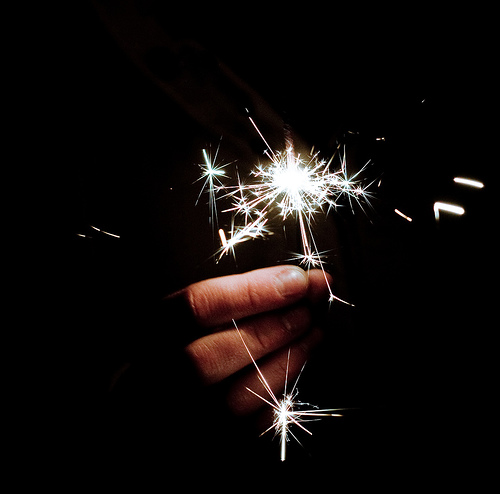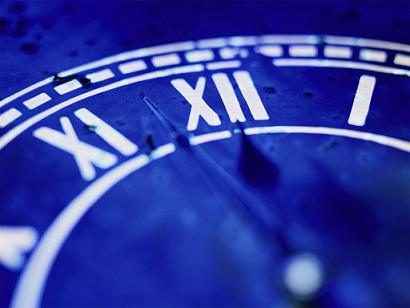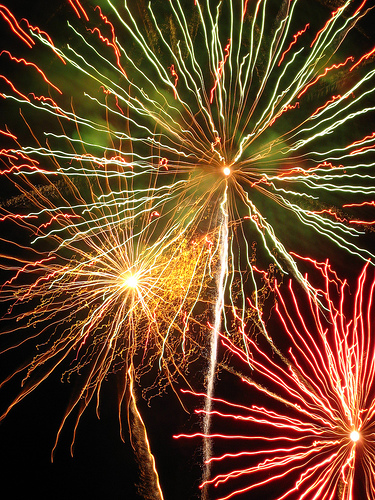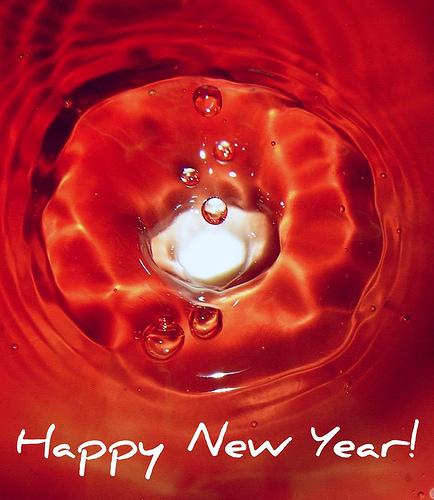
Photo: frischmilch
The tradition to celebrate a New Year is perhaps universal, although the precise date of its occurrence is so varied from culture to culture. It can be the winter solstice, the end of harvest time in the fall, the beginning of spring. The customs and rituals of celebration are varied as well. People send cards, give gifts, hold parades and masquerades, dress up, and almost always host feasts for family and friends.
But what about that special moment announcing the actual arrival of the New Year? Is it important, how is it chosen and how is it marked? How do people actually ring it in? After all, it is the culmination of the festivities, the moment the New Year is considered to be officially here. It is the threshold dividing the Old from New, marking the transcendental step into the new and unknown.

Photo: 9009139@N08
So, it is only logical that special attention be given to that particular moment. The beginning of the New Year in different cultures may be at midnight, for cultures that rely on the clock. Or it can be at sundown, the coming out of a new moon, or perhaps even at sunrise, in cultures that mark time through natural phenomena.
However, just watching the New Year come by is not enough; it needs to be accompanied by a ritual to welcome it. In the clock-relying cultures, that usually means there is a countdown, the numerically-expressed anticipation of the exact moment the New Year comes. Everyone’s eyes are focused on a prominent clock. Perhaps the clock of a historical tower, featured on TV, chimes in the New Year (Kremlin’s tower in Russia, for example) or just the clock of the town square where people are gathered to celebrate communally.
When the New Year strikes, people mirror its advent by re-creating it in spectacular ways. In almost all traditions, that happens through loud noise produced everywhere. Church bells ring and horns are blown. Sirens sound, firecrackers explode, and everyone shouts, “Happy New Year!” There is also fire: fireworks and firing guns into the air.

Photo: mels_stuff
There are many gestures marking the beginning of a New Year that emphasize community and fellowship. People who are gathered around a festive meal drink a special champagne toast, they hug and kiss each other at the stroke of midnight and sing a song – the Scottish Auld Lang Syne comes to mind. If they are outside, gathered in a public space, they may hug all strangers, in spirit of communitas.
Marking a New Year can have a national slant as well. In some countries, the head of state delivers an address to the nation at the stroke of midnight (Finland, for example) and in others, the national anthem is played on TV (Hungary). Connecting the arrival of a New Year to national unity may seem strange, but let’s not forget that for a long time celebrating the beginning of a new time cycle has been a religious feast. Making it a nation-bonding ritual is just one step further.

Photo: kikisdad
Finally, there are ringing-in rituals that don’t depend on the clock, but are defining moments of transition generated by people. For example, in Judaism, a ram’s horn (shofar) is blown to announce Rosh Hashanah. And in many Latin American traditions, the Old Year is represented by a straw man dressed in old clothes. Families draw his fictitious will, composed of their own faults and misfortunes of the past year. The New Year arrives when they burn it and so ritually cleanse bad luck while ushering in new opportunities and good luck in the New Year.
I love those New Year’s gestures of liminality, especially the creativity of newly invented ones, along with the symbolism of well known ones. Firecrackers break the darkness of the scary unknown. Hugs and kisses spread togetherness. And I’ll seal a copy of my New Year’s resolutions to open next December and see how well I’ve followed them.

Photo: 28481088@N00
This article was first posted by Ellie Ivanova on her personal blog.











1 comment so far ↓
Nobody has commented yet. Be the first!
Comment